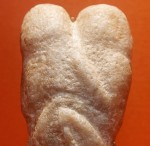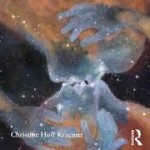There are several ways in which to construe the relationship of religious discourse to the world it attempts to describe, and with other (possibly competing, possibly complementary) interpretations such as science and philosophy.
The NOMA (non-overlapping magisteria) position, put forward by Stephen Jay Gould, is that science and religion deal with two different domains, and therefore share no common ground for either agreement or argument; science deals with empirical matters and religion deals with ‘questions of ultimate meaning’ (McGrath, 2007: 18). Richard Dawkins disagrees with NOMA because he argues that a universe with a creator deity would be a very different place to a universe without one, and therefore discussion of this does fall within the domain of science (Dawkins, 2006: 55).
The POMA (partially overlapping magisteria) position is that there is some overlap, and that they are two complementary ways of viewing the world (McGrath, 2007: 19).
Naturalists argue that only the physical realm exists, and phenomena such as consciousness are emergent properties of complex biological systems (Naturalism.org).
Bienkowski (2006: 2) identifies four possible belief positions for adherents of religions: materialism, the belief that only the material plane exists (this is similar to Naturalism, atheism, and humanism); idealism, the belief that the material plane is illusory; dualism, the belief that both material and spiritual realms exist, but are separate (similar to Luhrmann’s two worlds view); and animism, the belief that the spiritual world is immanent in the material world. The ideas discussed are very broad in scope, however, as they are intended to represent a range of religions and philosophies, and something more specific is needed to identify the nuances of Pagan discourse.
Tania Luhrmann (1989: 285-293) outlines four possible positions which magical practitioners take in justifying their views to sceptics. The first is realism, the idea that ‘there is a knowable objective reality and that magic reveals more of it than science’. The second position that she identifies is the two worlds view, that ‘the objective referent of magical claims is unknowable within the terms of an ordinary, scientific world’ (this is similar to the ‘non-overlapping magisteria’ or NOMA position). The third position is relativism, which ‘defines all truth as relative and contingent’ (which Luhrmann found to be quite a common view). The final position is the metaphorical view, that magic is metaphorical and is probably objectively not true, but is nevertheless a creative and enjoyable practice. Luhrmann (1989: 293) says that she rarely encountered this position except among those who had come to magic through political concerns such as environmentalism and feminism. This metaphorical view is embraced by Starhawk (1999: 219), who says that ‘[s]cientific knowledge, like religious knowledge, is a set of metaphors for a reality that can never be completely described or comprehended.’ However, Starhawk (1999: 7) is one of those Pagans who are deeply involved in environmental and feminist activism, as predicted by Luhrmann.
Luhrmann (1989: 284) states that the four positions are not mutually exclusive; she senses that ‘most magicians will give most of these arguments at some time during their magical career’.
In contrast, Dawkins (2006: 50) identifies seven possible belief positions on the existence of God, from strong theism to strong atheism, with agnosticism in the middle. However, these are not very useful for the purpose of discussing Paganism, because they only relate to the existence of a supernatural creator deity, and not to the possible ways in which the spiritual and material realms could interact. Belief in a creator is largely irrelevant to Pagans, since we are more interested in relating to Nature (Harvey, 1997: 145).
Other possible discursive positions include deep ecology, the view that the human order is not separate from the natural order, which implies that all life is sacred (Livingstone, 2002: 347). This is similar to the animism proposed by Graham Harvey, who advocates an embodied awareness and ‘listening neighbourliness’ towards other species (Harvey, 1997: 141). The Gaia Hypothesis goes further than this, arguing that the entire planet is such a complex system that it should be regarded as a living organism (Livingstone, 2002: 347). All of these views can be found in Pagan views of relationship with Nature.
Michael York suggests that, rather than talking about the “supernatural”, which implies that the Divine, deities, and spirits are somehow outside and beyond the material realm, we should use the term “preternatural”:
The supernatural as we know it is largely a Christian-derived expression from the idea that its ‘God’ is over and ‘above’ nature – material/empirical reality. It is this notion that is the target of secular and naturalistic animosity alike. Instead, rather than ‘supernatural’, I turn instead to the ‘preternatural’ that expresses the non-causal otherness of nature – one that comprehends the magical, miraculous, numinous, mysterious yet non-empirical quality of the sublime. Most important, however, the preternatural does not demand belief or faith but instead encounter and experience – whether through contemplation, metaphor, spontaneous insight, ecstasy, trance, synchronicity or ritual or any combination of these. As Margot Adler expressed it, paganism is not about belief but what we do.
This is an important distinction; much of the criticism of religion offered by new atheists and skeptics is aimed at the supernatural elements of theology – the assumption that the supernatural exists outside the physical world, and that is why it is undetectable by science; whereas atheists would argue that it is undetectable by science because it does not exist.
Another approach to distinguishing between different models of the world is offered by Nuyen (2001: 394), who discusses realism and antirealism in religion. Religious realism (like Luhrmann’s realist position) asserts that there is an external referent of religious language; religious antirealism asserts that ‘there is no transcendent being or reality to which religious languages and practices refer, and that the source of religious meaning and value lies in us, human beings’ (Nuyen, 2001: 394). This antirealism is very similar to Luhrmann’s metaphorical position.
There is also a debate within science itself over whether scientific discourse actually has any objective referents in reality, or whether scientific understandings are necessarily metaphors.
Folse (1986: 96) describes the classic scientific realist position as holding that at least some terms in theoretical statements correspond to the properties of entities to which these terms refer. Another form of realism is ‘the quest for knowledge about the reality producing the phenomena we experience’, which does not necessarily insist that that reality is entirely comprehensible. This is comparable to religious realism, which also asserts that descriptions of deities have objective external referents.
Muller and Livingston (1995: 16) describe scientific antirealism as the view that scientific terms are merely ‘terminological abstraction(s) designed to account for the… results of a particular set of experiments’ and do not necessarily have any objective referents. They note that much of the debate between realists and antirealists in science hinges on the Copenhagen interpretation of quantum mechanics, which posits that the observer affects the observed, thereby calling into question the notion of an objective external reality. Magicians often quote this in defence of the ‘relativist’ position (Luhrmann, 1989: 291); it is interesting because it implies that some scientists understand their descriptions of reality to be metaphorical.
The various positions available in both scientific and religious discourse show that the debate is not simply happening between science and religion, but also within both those discourses, and so it is not accurate to talk about either discourse as if it were a monolithic entity engaged in a titanic struggle for truth and authority with the other discourse; the whole picture is far more complex.
Bibliography
Bienkowski, P. (2006) ‘Persons, things and archaeology: contrasting world-views of minds, bodies and death’, Respect for Ancient British Human Remains: Philosophy and Practice. [online] Available from: Manchester Museum,http://www.museum.manchester.ac.uk/medialibrary/documents/respect/persons_things_and_archaeology.pdf (accessed 25.08.2008)
Dawkins, R. (2006) The God Delusion. London: Bantam Press.
Folse, H.J. (1986) ‘Niels Bohr, Complementarity, and Realism’. Proceedings of the Biennial Meeting of the Philosophy of Science Association, 1, pp. 96-104 [online] Available from: http://www.jstor.org/stable/193111 (accessed 07.09.2008)
Harvey, G. (1997) Contemporary Paganism: Listening People, Speaking Earth. New York: New York University Press.
Livingstone, D. N. (2002) ‘Ecology and the Evironment.’ In: Ferngren, G. B., Science & Religion: a historical introduction. Baltimore andLondon:JohnsHopkinsUniversity Press.
Luhrmann, T. (1989) Persuasions of the Witch’s Craft: Ritual Magic in Contemporary England. Cambridge, MA: Harvard University Press.
McGrath, A. E. (2007) The Dawkins Delusion? London: SPCK.
Muller, A. and Livingston, P. (1995) ‘Realism/Anti-Realism: A Debate’. Cultural Critique, No. 30, The Politics of Systems and Environments, Part I, pp. 15-32 [online] Available from: http://www.jstor.org/stable/1354431 (accessed 07.09.2008)
Nuyen, A.T. (2001) ‘Realism, Anti-Realism, and Emmanuel Levinas.’ The Journal of Religion, 81, (3), pp. 394-409 [online] Available from: http://www.jstor.org/stable/1206402 (accessed 07.09.2008)
Starhawk (1999), The Spiral Dance: A Rebirth of the Ancient Religion of the Great Goddess. San Francisco, HarperSanFrancisco.
York, M. (2008), ‘A Pagan Defence of Theism’. Theologies of Immanence. [online] Available from: http://pagantheologies.pbworks.com/w/page/13621955/A%20Pagan%20defence%20of%20theism (accessed 30.01.2013)
















